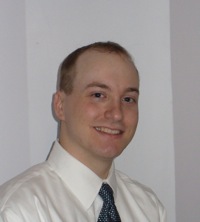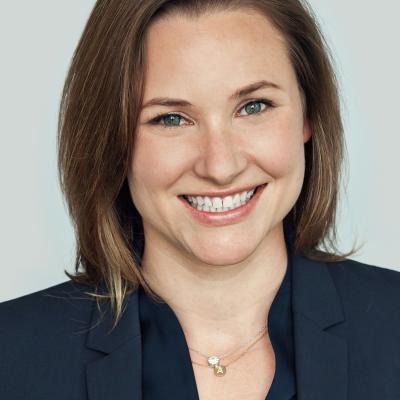

Monday, November 16, 3:30-4:30, ZOOM
Assistant Professor
Washington University St. Louis
The Barnes research group at Washington University in St. Louis employs a multi-disciplinary approach towards research challenges in the areas of stimuli-responsive polymers and materials, nanoparticle-based combination drug delivery, biomaterials, and topologically complex polymers and materials. The “keystone” of our research program is synthetic organic chemistry, which is central to the preparation of all functional materials in our group. Supramolecular and polymer chemistries are directly associated with this keystone, and together, all three areas represent the foundation of the research group. We aim to build on this foundation by constructing novel 'smart' materials with well-defined functions – for both fundamental and applied purposes – that will ultimately lead us down research pathways in the areas of nanomaterials, biomedical engineering, and inorganic and environmental chemistries.
Publications (Google Scholar Citations)
ORCID: https://orcid.org/0000-0003-2945-8691
h-index: 23 Total Articles: 40 Total Citations: 3178 (Web of Science, Nov. 2020)
h-index: 25 Total Citations: 4003 (Google Scholar Citations, Oct. 2020)
Friday, February 14, 3:30-4:30pm, WEL 2.122
Professor
Queen's University Belfast
ABSTRACT: One of the main principles underlying fluorescent sensors is based on PET (photoinduced electron transfer), according to which a switching ‘on’ of fluorescence in response to chemical analytes can be designed. Since its generalization in Colombo, Sri Lanka, it has now grown to involve over 540 laboratories around the world. Some of these sensor systems are serving in critical care units in hospitals and in ambulances, performing blood diagnostics. These form the basis of a half-billion dollar industry. Other sensors visualize intracellular players. Yet others map species distributions in nanometric spaces near membranes. These spaces are too small for the tiniest silicon-based electronic devices to enter. Our introduction of molecular logic gates from Belfast, Northern Ireland, allows us to build more complex sensors and micro-object identification systems. More complex operations involving sequential logic and even human-scale computations, e.g. edge detection of objects and outline drawing, are now achieved by molecular systems. More than 900 laboratories have contributed to this field so far.
h-index: 48 Total Articles: 78 Total Citations: 10,381 (Web of Science, Jan. 2020)
Monday, February 10, 3:30-4:30, WEL 2.122
Assistant Professor
University of Illinois Urbana Champaign
Early diagnosis of cancer dramatically increases the likelihood for successful treatment. Indeed, imaging techniques have become integral component of cancer detection. In this regard, photoacoustic imaging is a powerful new imaging modality that is based on the detection of sound waves generated by optically exciting a chromophore with light. Due to the low scattering of sound in biological tissues, this state-of-the-art approach is ideal for non-invasive, deep-tissue biomedical imaging. Our goal is to synthesize chemical probes for the early detection of cancer to facilitate staging, surgical planning, and assessment for residual cancer following tumor resection. Additionally, these versatile chemical tools will be applied to study and understand fundamental cancer processes including the mechanisms of drug resistance.
Publications (Google Scholar Citations)
h-index: 21 Total Citations: 2400 (Google Scholar Citations, Jan. 2020)
Thursday, January 30, 1:00-2:00, NHB 1.720
Associate Professor
City College of New York
ABSTRACT: The development of transition metal-catalyzed cross-coupling reactions has greatly influenced the manner in which the synthesis of complex organic molecules is approached. A wide variety of methods are now available for the formation of C(sp2)–C(sp2) bonds, and more recent work has focused on the use of C(sp3) electrophiles and nucleophiles. However, the use of secondary alkyl nucleophiles in cross-coupling reactions remains an outstanding challenge because of slow alkyl transmetallation and the tendency of alkyl groups to isomerize under the reaction conditions. In principle, cross-coupling reactions that employ enantioenriched secondary alkyl nucleophiles can proceed in an enantiospecific manner where the original stereochemistry is transferred to the coupling product. This constitutes a novel approach to the preparation of enantioenriched molecules in which stereochemistry is introduced prior to direct reaction at a stereocenter. In this seminar, we will describe new methods for the use of configurationally stable, optically active alkyltin and alkylboron nucleophiles in enantiospecific Pd-catalyzed cross-coupling reactions. Such processes enable the rapid generation of libraries of non-racemic drug candidates from a single optically active precursor.
h-index: 16 Total Articles: 23 Total Citations: 1730 (Web of Science, Jan. 2020)
Tuesday, January 21, 2:00-3:00, NHB 1.720
Assistant Professor
University of Michigan
Abstract: Natural sources, such as plants, fungi and microbes, have historically provided compounds with potent pharmaceutical properties. While it can be challenging to build complex natural products in a lab using existing chemistry methods, Nature has perfected these biosynthetic pathways. The work described leverages the power of Nature’s tools for building complex molecules to synthesize novel molecules with therapeutic potential. The reactivity and selectivity of enzymes from natural product pathways are often unparalleled in existing chemical methods. Enzymes with potential synthetic utility are used as a starting point for engineering biocatalysts with (1) broad substrate scope, (2) high catalytic efficiency, and (3) exquisite site- and stereoselectivity. These biocatalytic methods are employed to efficiently synthesize biologically active complex molecules.
Publications (Google Scholar Citations)
h-index: 11 Total Articles: 21 Total Citations: 508 (Web of Science, Dec. 2019)
h-index: 15 Total Citations: 1055 (Google Scholar Citations, Dec. 2019)
Monday, January 13, 3:30pm - 4:30pm, WEL 2.122
Caltech
Postdoctoral Researcher - NIH Ruth L. Kirschstein NRSA Postdoctoral Fellowship
PhD MIT, 2017 (Buchwald)
We repurpose diverse existing proteins and their promiscuous functions for new chemistries, generate catalysts for ncAA formation, and design new ML-based approaches for directed evolution.
Publicatons (Google Scholar Citations)
h-index: 21 Total Citations: 1533 (Google Scholar Citations, Dec. 2019)
The Seminars page is brought to you by the University Libraries. Our intent is to provide a quick profile of our guest speakers, links to their research group sites, recent publications, author metrics, and other information to enhance your engagement with the guests.

This work is licensed under a Creative Commons Attribution-NonCommercial 4.0 Generic License.